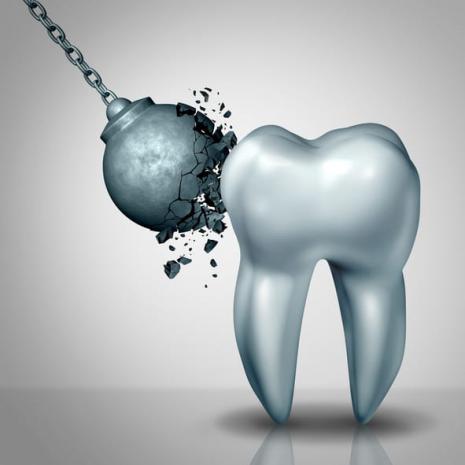
Breaking News
 The 3 Reasons Behind US Plot to Depose Venezuela's Maduro – Video #254
The 3 Reasons Behind US Plot to Depose Venezuela's Maduro – Video #254
 Evangelicals and the Veneration of Israel
Evangelicals and the Veneration of Israel
 Zohran Mamdani's Socialist Recipe for Economic Destruction
Zohran Mamdani's Socialist Recipe for Economic Destruction
 BREAKING: Fed-Up Citizens Sue New York AG Letitia James for Voter Intimidation...
BREAKING: Fed-Up Citizens Sue New York AG Letitia James for Voter Intimidation...
Top Tech News
 Goodbye, Cavities? Scientists Just Found a Way to Regrow Tooth Enamel
Goodbye, Cavities? Scientists Just Found a Way to Regrow Tooth Enamel
 Scientists Say They've Figured Out How to Transcribe Your Thoughts From an MRI Scan
Scientists Say They've Figured Out How to Transcribe Your Thoughts From an MRI Scan
 SanDisk stuffed 1 TB of storage into the smallest Type-C thumb drive ever
SanDisk stuffed 1 TB of storage into the smallest Type-C thumb drive ever
 Calling Dr. Grok. Can AI Do Better than Your Primary Physician?
Calling Dr. Grok. Can AI Do Better than Your Primary Physician?
 HUGE 32kWh LiFePO4 DIY Battery w/ 628Ah Cells! 90 Minute Build
HUGE 32kWh LiFePO4 DIY Battery w/ 628Ah Cells! 90 Minute Build
 What Has Bitcoin Become 17 Years After Satoshi Nakamoto Published The Whitepaper?
What Has Bitcoin Become 17 Years After Satoshi Nakamoto Published The Whitepaper?
 Japan just injected artificial blood into a human. No blood type needed. No refrigeration.
Japan just injected artificial blood into a human. No blood type needed. No refrigeration.
 The 6 Best LLM Tools To Run Models Locally
The 6 Best LLM Tools To Run Models Locally
 Testing My First Sodium-Ion Solar Battery
Testing My First Sodium-Ion Solar Battery
 A man once paralyzed from the waist down now stands on his own, not with machines or wires,...
A man once paralyzed from the waist down now stands on his own, not with machines or wires,...
Goodbye, Cavities? Scientists Just Found a Way to Regrow Tooth Enamel

A newly developed material has been used to create a gel capable of repairing and rebuilding tooth enamel, offering a potential breakthrough in both preventive and restorative dental care.
Scientists from the University of Nottingham's School of Pharmacy and Department of Chemical and Environmental Engineering designed this bioinspired substance to restore damaged or eroded enamel, reinforce existing enamel, and help guard against future decay. Their findings were published in Nature Communications.
This protein-based gel, which contains no fluoride, can be quickly applied to teeth using the same method dentists use for traditional fluoride treatments. It imitates the natural proteins responsible for guiding enamel formation early in life. Once in place, the gel forms a thin, durable coating that seeps into the tooth surface, filling small cracks and imperfections.
Acting as a structural framework, it draws calcium and phosphate ions from saliva to encourage the precise growth of new minerals through a process known as epitaxial mineralization. This allows the new material to merge with the natural tooth, restoring both its structure and strength.
Applications Beyond Enamel Repair
The new material can also be applied on top of exposed dentine, growing an enamel-like layer on top of dentine, which has many benefits including treating hypersensitivity or enhancing the bonding of dental restorations.
Enamel degradation is a major contributor to tooth decay and is associated to dental problems affecting almost 50% of the world's population. These problems can lead to infections and tooth loss, and can also be associated with conditions such as diabetes and cardiovascular disease.
Enamel does not naturally regenerate; once you lose it is gone forever. There is currently no solution available that can effectively regrow enamel. Current treatments, such as fluoride varnishes and remineralization solutions, only alleviate the symptoms of lost enamel.
Promising Results from the Research
Dr Abshar Hasan, a Postdoctoral Fellow and leading author of the study, said: "Dental enamel has a unique structure, which gives enamel its remarkable properties that protect our teeth throughout life against physical, chemical, and thermal insults."
He continues, When our material is applied to demineralized or eroded enamel, or exposed dentine, the material promotes the growth of crystals in an integrated and organized manner, recovering the architecture of our natural healthy enamel. We have tested the mechanical properties of these regenerated tissues under conditions simulating 'real-life situations' such as tooth brushing, chewing, and exposure to acidic foods, and found that the regenerated enamel behaves just like healthy enamel."



